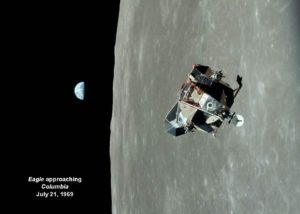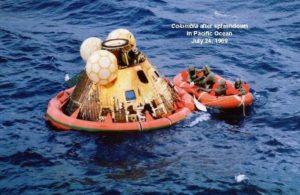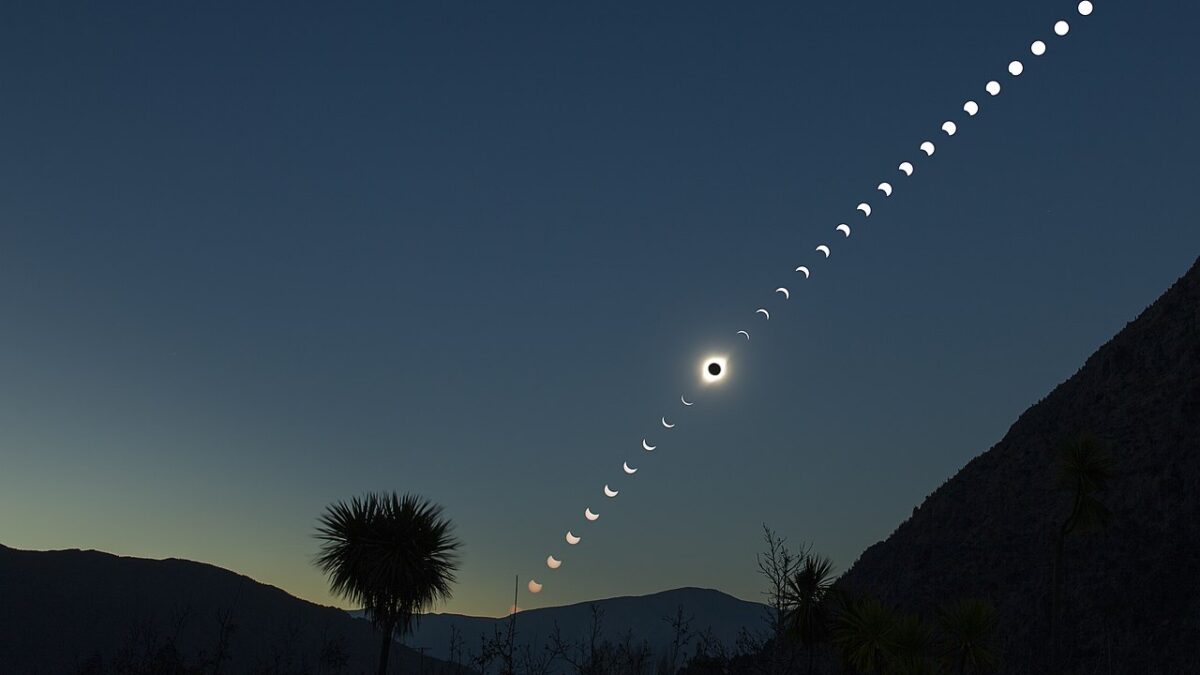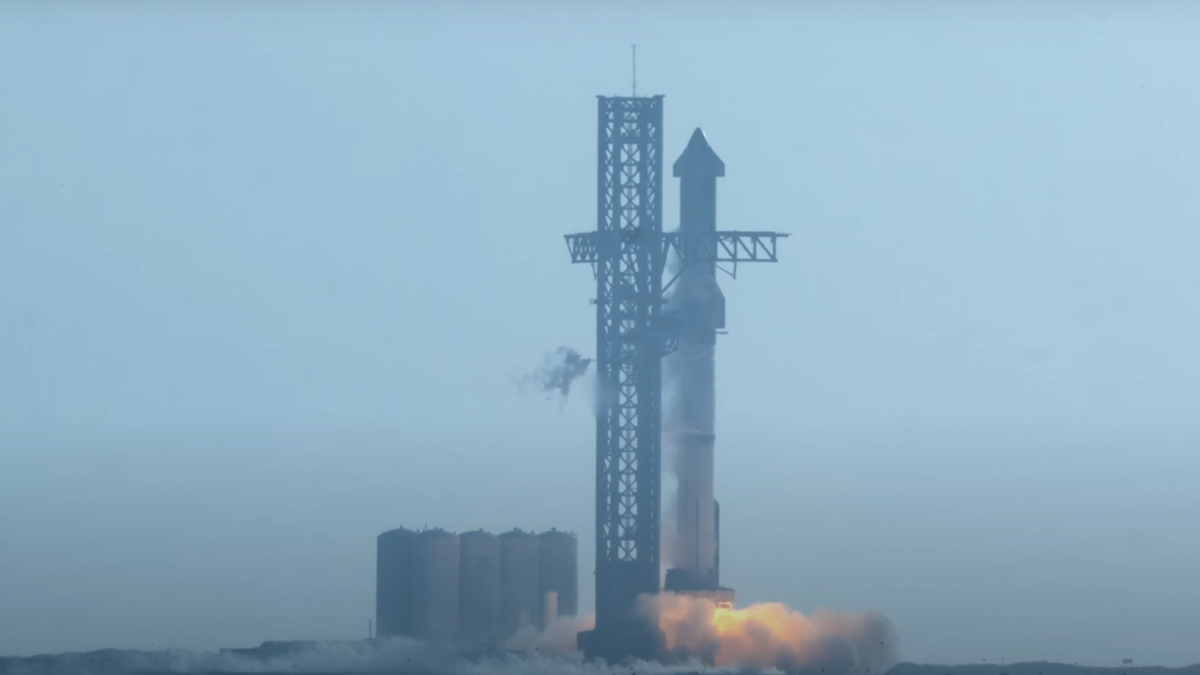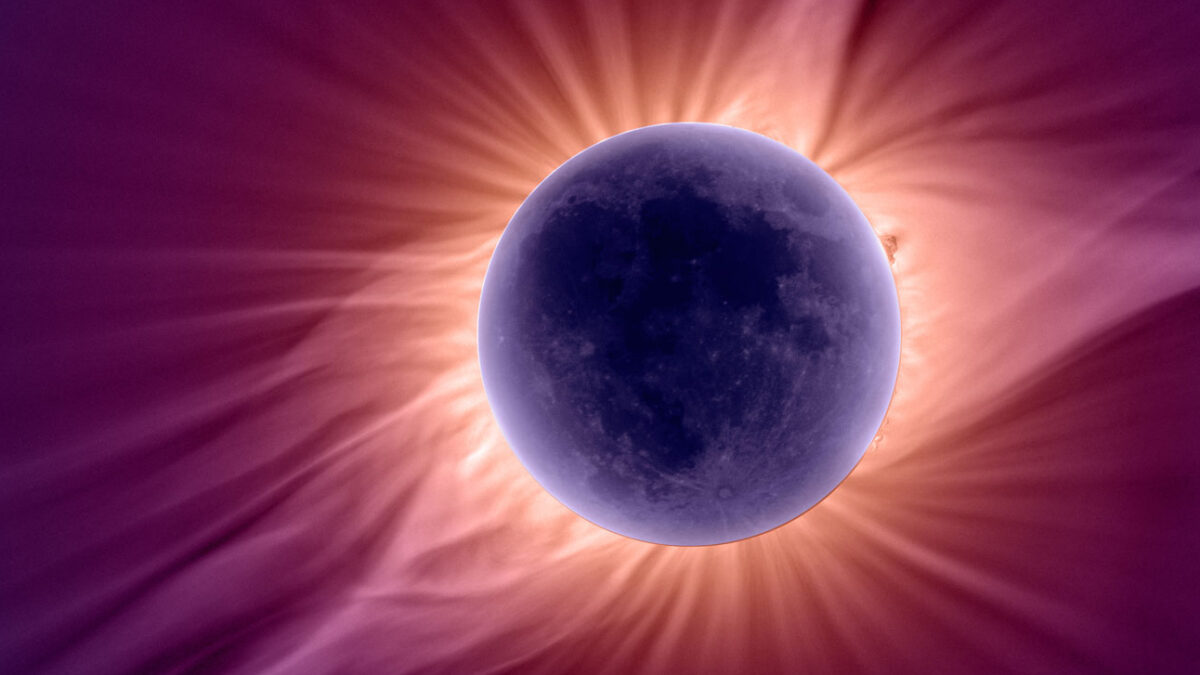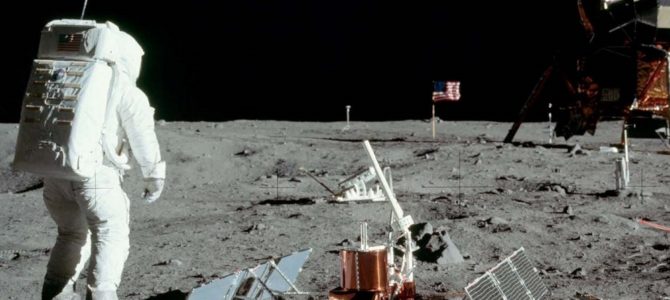
The great accomplishment of the last century — the culmination of technological developments from two world wars and continued challenges from rival powers — left few markers behind, except a few charred capsules barely 13 feet across and a few hundred pounds of rocks. Yet they captivated the imagination of millions around the globe. Why?
Because thousands of men and women, sponsored by tens of millions more, achieved what had been impossible even a few years before and has remained effectively out of reach for longer than most Americans have lived. That achievement was the first manned lunar landing, followed by six more attempts, five of which were successful, over the next 41 months. Saturday marks the 50th anniversary of that first landing and moonwalk.
The new documentary “Apollo 11” came out this year. Todd Douglas Miller — best known for the paleontological, who-dunnit “Dinosaur 13,” about federal agents seizing a complete Tyrannosaurus rex skeleton from its discoverers — directed the film, which included previously unreleased footage. A preview includes some of the pre-launch events. From pre-launch to terrestrial return, Apollo 11’s feat marked an extraordinary event in American history.
Historic Preparations Before the Launch
To embark on this moment, the Apollo 11 spacecraft atop its Saturn V launcher had to be assembled and moved to its launch site.
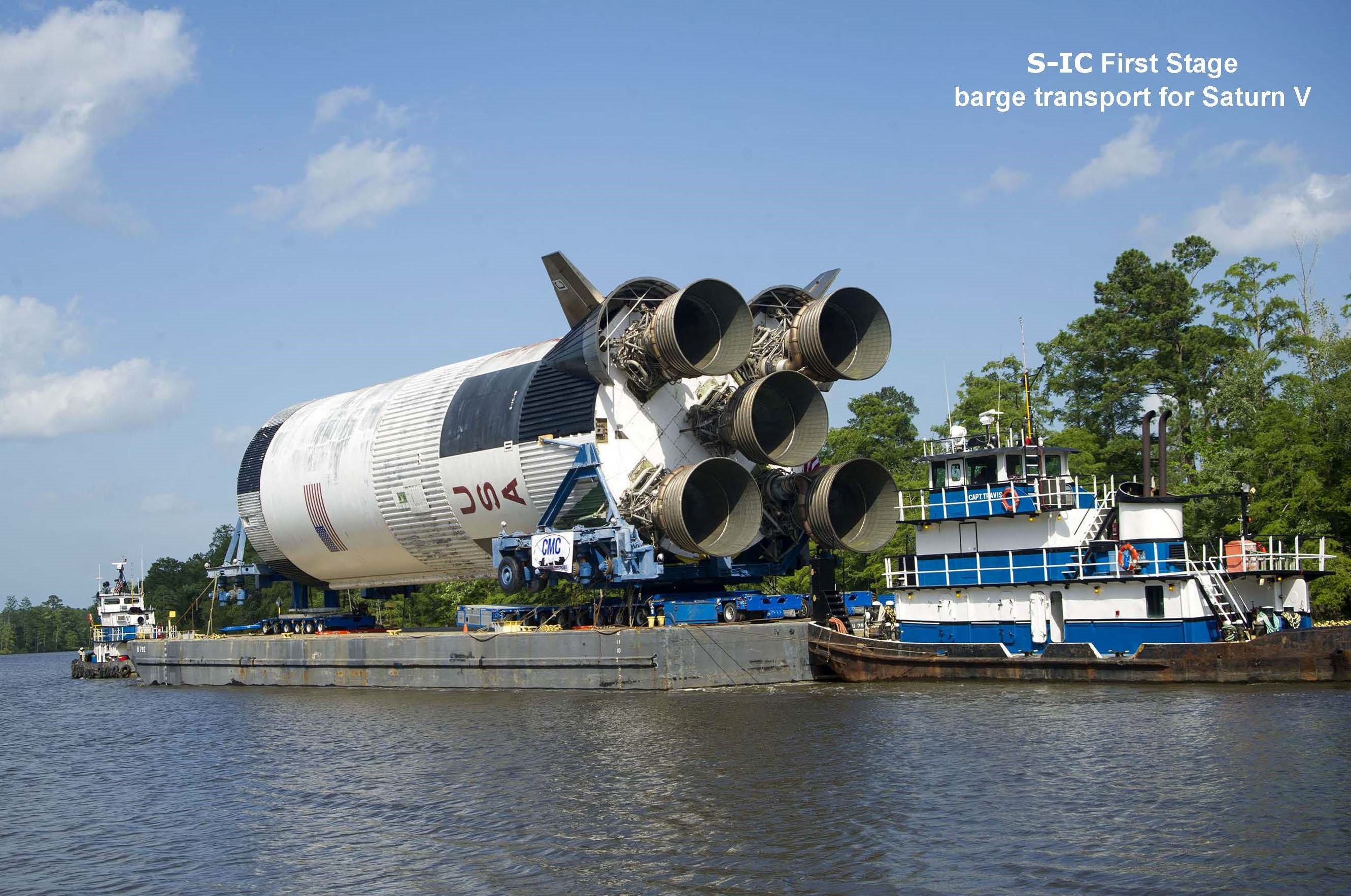 Upon construction of the spacecraft, the stages had to be transported to Cape Canaveral (then named Cape Kennedy) for stack assembly in the 525-foot-tall Vehicle Assembly Building. Tugboats ferry a first-stage S-IC on a barge.
Upon construction of the spacecraft, the stages had to be transported to Cape Canaveral (then named Cape Kennedy) for stack assembly in the 525-foot-tall Vehicle Assembly Building. Tugboats ferry a first-stage S-IC on a barge.
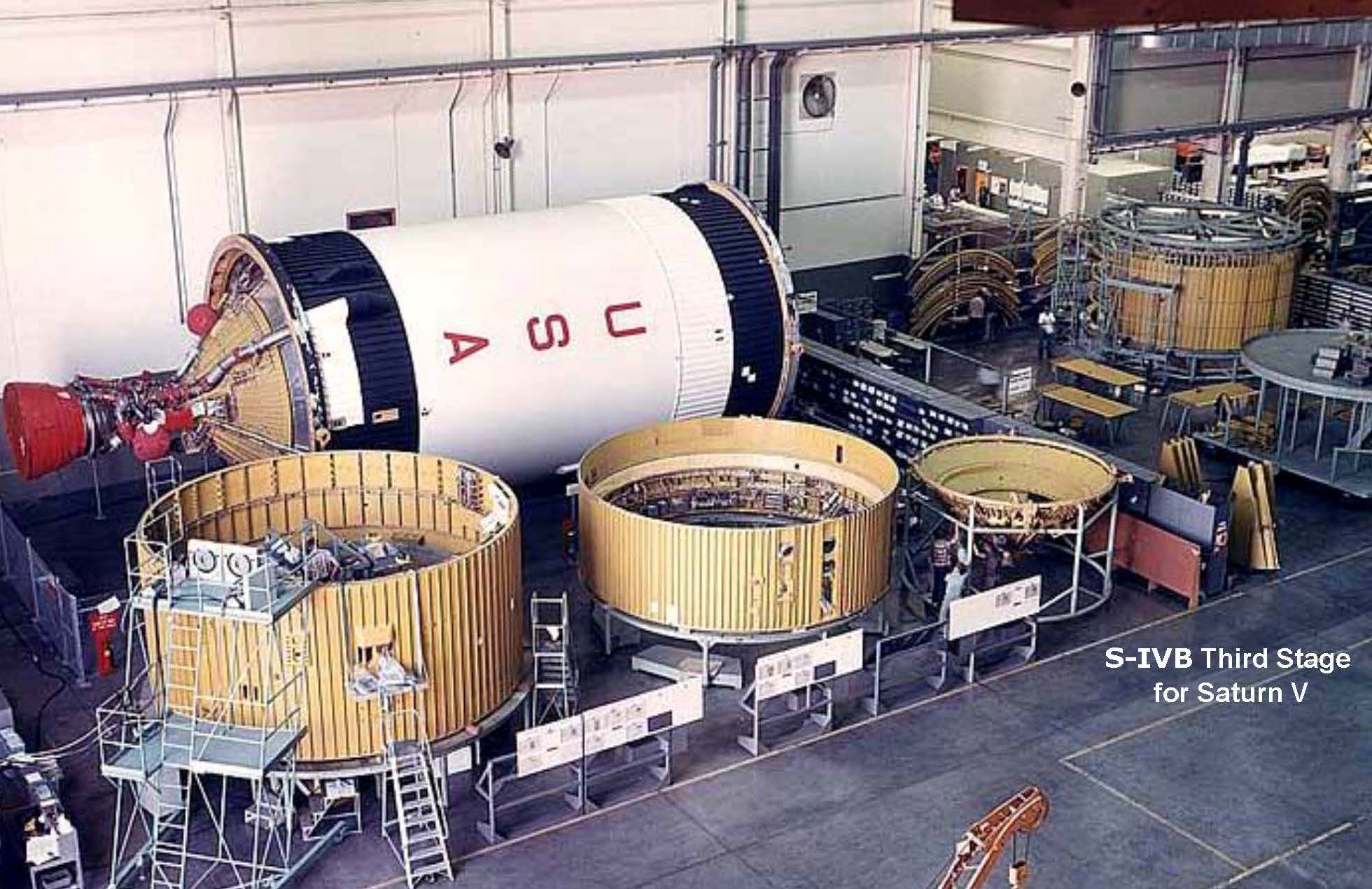
Once stacked in the Vehicle Assembly Building, a tractor bed slowly rolled the Saturn V, topped by its spacecraft payload, to its launch site Complex 39 Pad A. Apollo 10 lifted from Pad B. Each Saturn V bore a separate assembly designation. The stack for Apollo 11 was labeled AS-506 as the sixth Saturn V to fly.
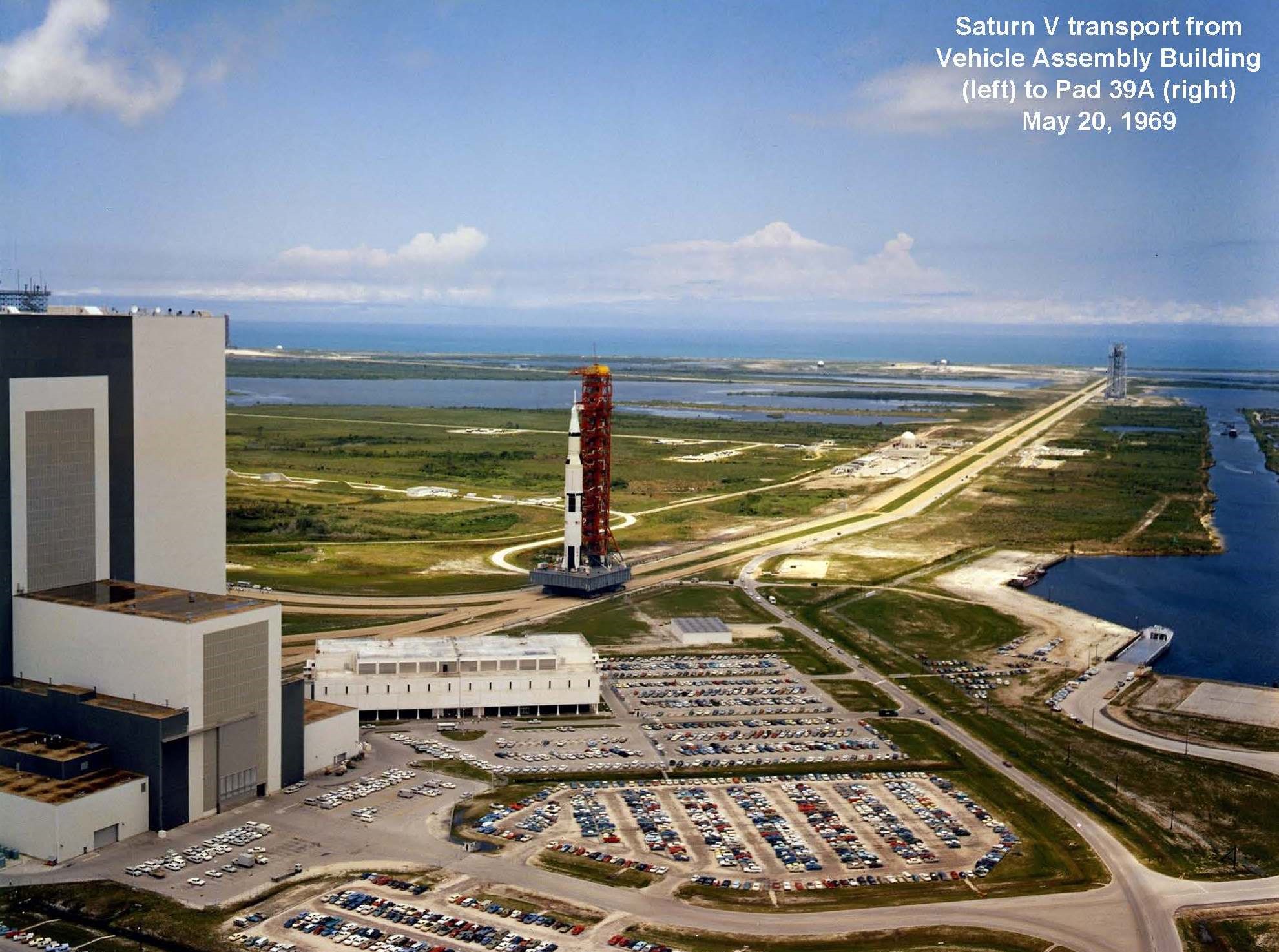
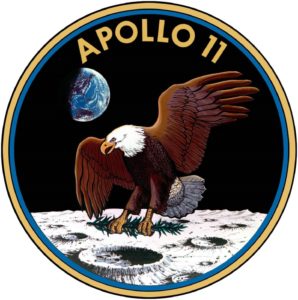
The three astronauts for this historic journey were mission commander Neil Armstrong (1930-2012), command module pilot Michael Collins (born in 1930), and lunar module pilot Edwin “Buzz” Aldrin (born in 1930). The backup crew were commander James Lovell Jr. (born in 1928), CM pilot William Anders (born in 1933), and LM pilot Fred Haise Jr. (born in 1933).
Armstrong had previously flown on Gemini 8, Collins on Gemini 10, and Aldrin on Gemini 12. Lovell had flown on Gemini 7, Gemini 12, Apollo 8, and later Apollo 13. Anders had also flown on Apollo 8, and Haise later flew on Apollo 13 and shuttle approach tests.
Once in lunar orbit, Armstrong and Aldrin would enter LM Eagle and descend to the lunar surface, while Collins remained aboard CSM Columbia to rendezvous and redock with Eagle after its ascent from the surface or in the event of a landing abort.
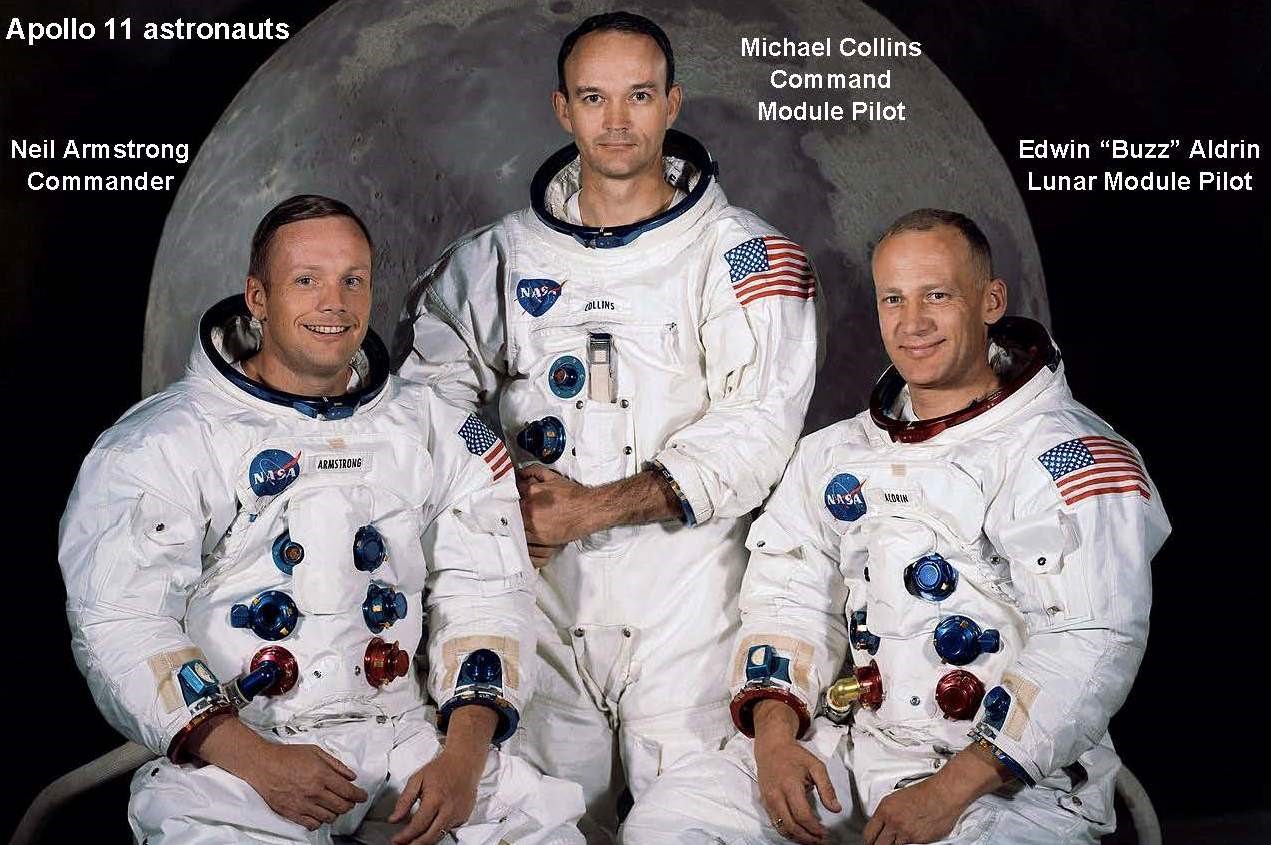
July 16, 1969 marked the clear day of the Apollo 11 launch on the shores overlooking the Atlantic Ocean. Its rocket plume from the five F-1 engines looked like a fiery sword in the blue sky. Thousands of spectators watched, including former president Lyndon B. Johnson and Vice President Spiro Agnew.
Then Came the Blast-Off
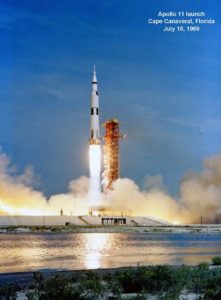
Kennedy Space Center in Florida handled the launch. After clearing the launch tower, mission control switched to the Manned Spacecraft Center in Houston, Texas. Following the death of Johnson, who had prioritized funding for NASA during his administration, the Texas facility was renamed in his honor. Eugene F. “Gene” Kranz (born in 1933), best remembered for his team saving the crew of Apollo 13 only nine months later, led mission control that day.
Following separation of the first and second stages, Apollo 11 entered Earth’s orbit. The S-IVB’s J-2 engine fired for nearly six minutes to maneuver the spacecraft into translunar injection. CSM Columbia separated from the S-IVB, turned around, and docked with LM Eagle, leaving the S-IVB third stage behind. During this interval, Columbia separated from the third stage, turned around, and docked with Eagle, leaving the third stage behind.
The next day, Columbia briefly fired its engine for course correction. Armstrong and Aldrin entered Eagle for inspection on July 18, while the joined spacecraft coasted toward the moon. On July 19, a six-second engine burn brought Apollo 11 into lunar orbit. Late that day, (Central Time in Houston), Armstrong and Aldrin entered Eagle.
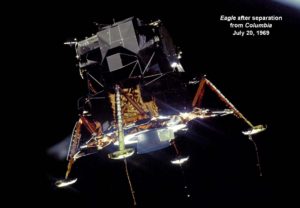
Shortly after noon on July 20, Eagle detached from Columbia with Collins remaining aboard, inspecting the landing gear to ensure their proper extension. Wires extending underneath three of the footpads would sense touchdown. The front pad lacked the wire, to avoid tripping the astronauts when they stepped off the ladder.
How America Again Made World History
Eagle descended toward the lunar surface. Off course, Armstrong piloted the controls while Aldrin called out instrument readings and interpreted computer glitches. Steering away from boulders, Armstrong and Aldrin cut the descent engine once the pad sensors indicated contact in Mare Tranquillitatis at 2:18 p.m. CDT.
Finally, Armstrong announced to a breathless world audience, “Houston, Tranquility Base here, the Eagle has landed.”
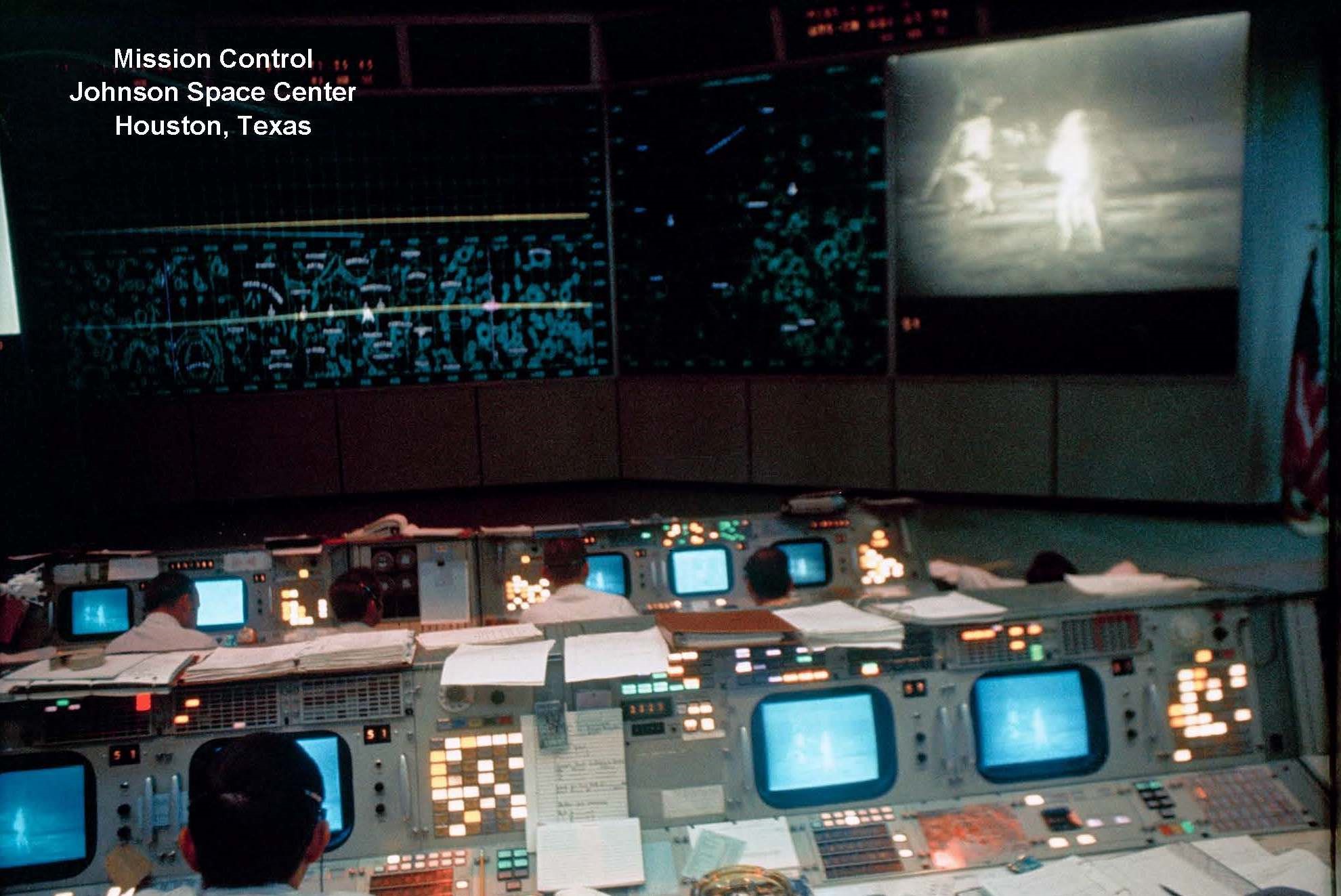 Mission control in Houston continued to monitor both spacecraft, in lunar orbit and on the surface. After a few hours rest, Armstrong exited Eagle at 8:55 p.m. with Aldrin following shortly thereafter for their two-hour moonwalk. They planted the American flag at 9:42 p.m., and President Richard Nixon called six minutes later.
Mission control in Houston continued to monitor both spacecraft, in lunar orbit and on the surface. After a few hours rest, Armstrong exited Eagle at 8:55 p.m. with Aldrin following shortly thereafter for their two-hour moonwalk. They planted the American flag at 9:42 p.m., and President Richard Nixon called six minutes later.
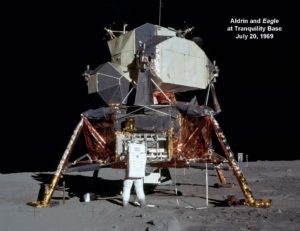
During the next hour, they opened the science equipment bay doors and deployed experimental equipment — in particular, a passive seismometer and a retroreflector.
The passive seismic experiments package, or PSEP, included a seismometer for measuring lunar quakes to gain a better understanding of the moon’s internal physical structure. The laser ranging retroreflector, or LRRR, was an omnidirectional mirror for reflecting green laser light back to Earth to enable a high-accuracy distance measurement based on the time between the pulse emitted and the reflection received.
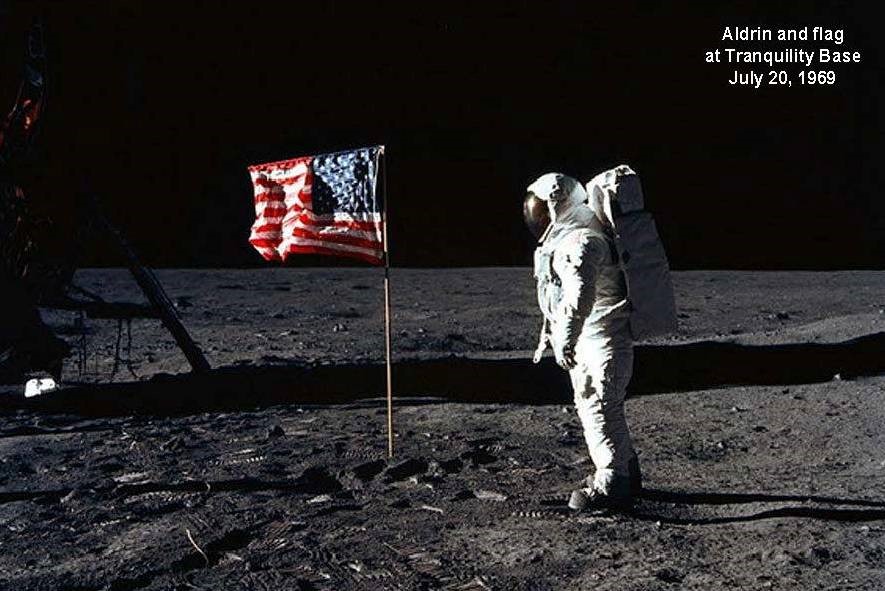 Armstrong and Aldrin also took photographs and collected rock and soil samples.
Armstrong and Aldrin also took photographs and collected rock and soil samples.
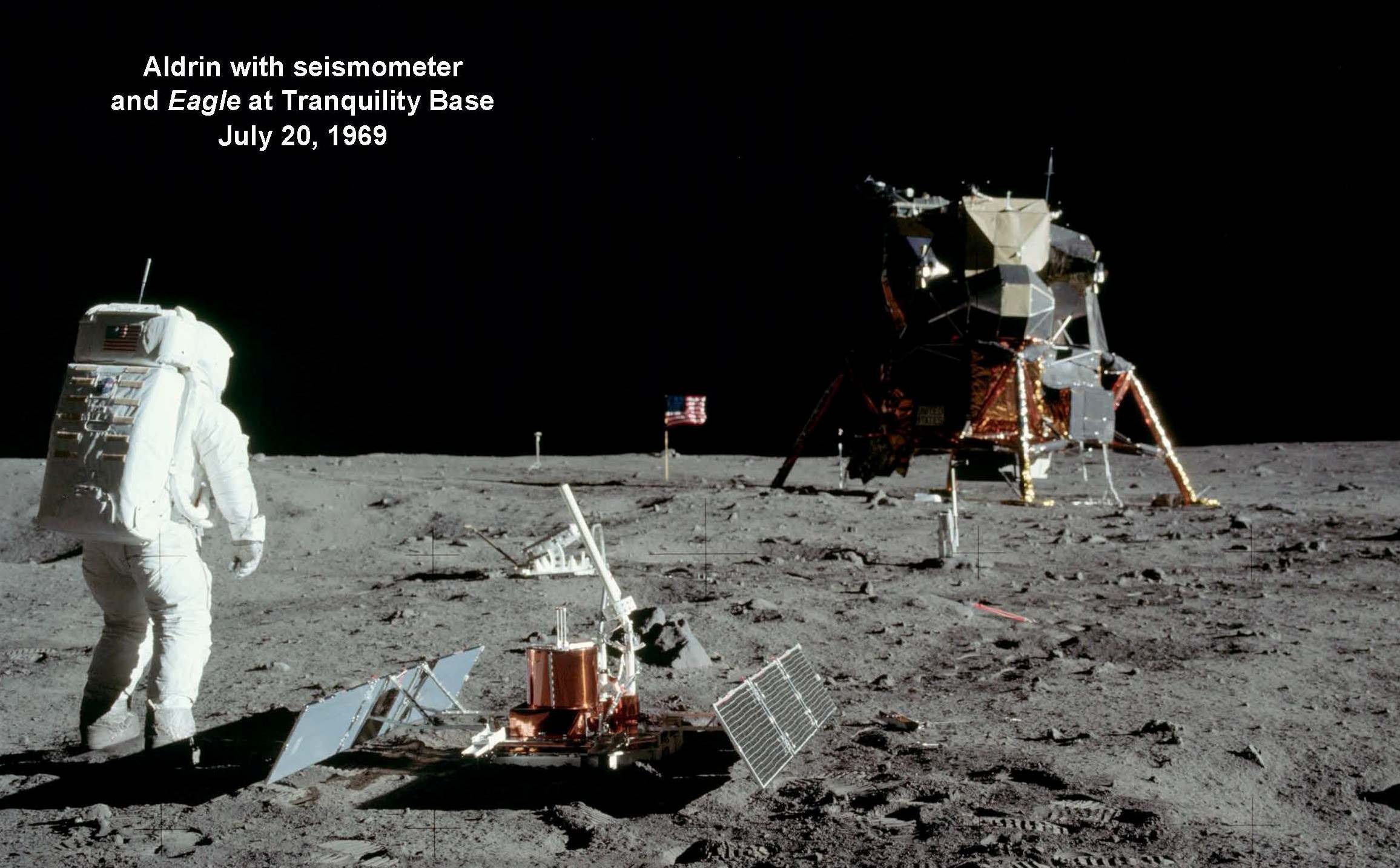
During this interval, Armstrong walked to the edge of the Little West crater and photographed Eagle from Panorama Station 5, the site in last year’s movie “First Man,” where daughter Karen’s bracelet was left behind.
 Aldrin and Armstrong concluded their surface excursion and reentered Eagle before midnight. More than 12 hours later, just before noon on July 21, the two astronauts ignited Eagle’s ascent stage motor to lift off from the moon. Aldrin reported that the exhaust plume knocked the flag down. Three-and-a-half hours later, Armstrong and Aldrin in Eagle’s ascent module rejoined Collins, docking with Columbia.
Aldrin and Armstrong concluded their surface excursion and reentered Eagle before midnight. More than 12 hours later, just before noon on July 21, the two astronauts ignited Eagle’s ascent stage motor to lift off from the moon. Aldrin reported that the exhaust plume knocked the flag down. Three-and-a-half hours later, Armstrong and Aldrin in Eagle’s ascent module rejoined Collins, docking with Columbia.
The Harrowing Return to Earth
After transferring their lunar samples and reboarding Columbia’s cabin, the astronauts jettisoned Eagle in the late afternoon and fired the CSM’s engine to return toward Earth before midnight. During the interim of the next two days, the astronauts engaged in midcourse corrections and television transmissions. They separated from the SM in the late morning of July 24, followed by the Columbia capsule, and reentered the Earth’s atmosphere with parachutes deploying.
Columbia’s splashdown in the Pacific shortly before 11 p.m. ended the historic return. The astronauts and their capsule were retrieved by USS Hornet (CV-12), an Essex-class aircraft carrier.
Upon boarding the carrier, Armstrong, Aldrin, and Collins were quarantined in a trailer to preclude the possibility of unknown lunar microbes infecting humanity. While aboard Hornet, Nixon greeted the Apollo 11 crew in the trailer before embarking on an eight-nation tour around the globe.
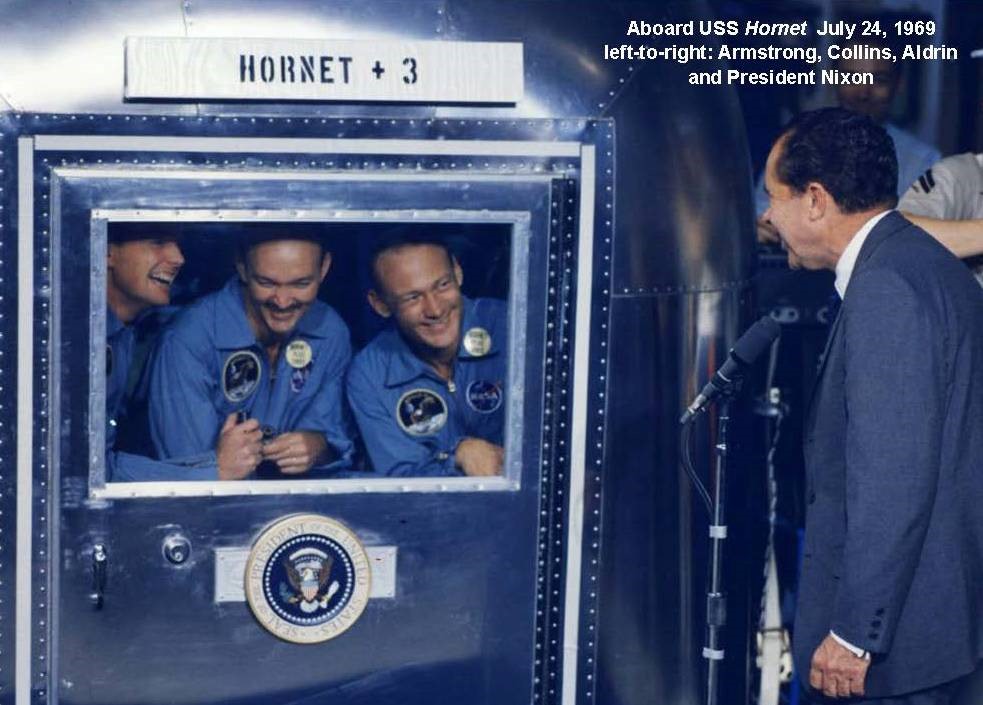
From Sept. 29 through Nov. 5, the Apollo 11 astronauts and their wives landed in 24 cities around the world, being ferried aboard the presidential VC-137B, a modified Boeing 707 then serving as Air Force One. They shook hands with thousands of people, including Pope Paul VI.
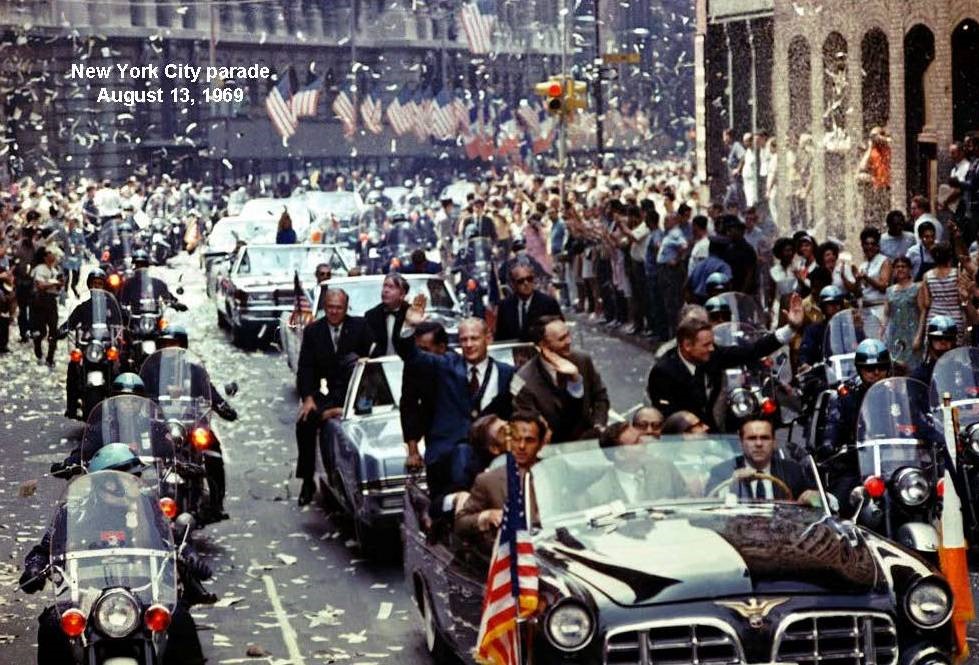
As a postscript, the occasional conspiracy-minded Luddite scoffs at the moon landings. The Lunar Reconnaissance Orbiter has photographed the moon’s surface from an altitude of about 15 miles. Tranquility Base shows the descent stage of the lunar module Eagle, along with the boot tracks Armstrong and Aldrin made while they walked on the surface. Also visible is the Panorama 5 spot where Armstrong photographed Eagle.
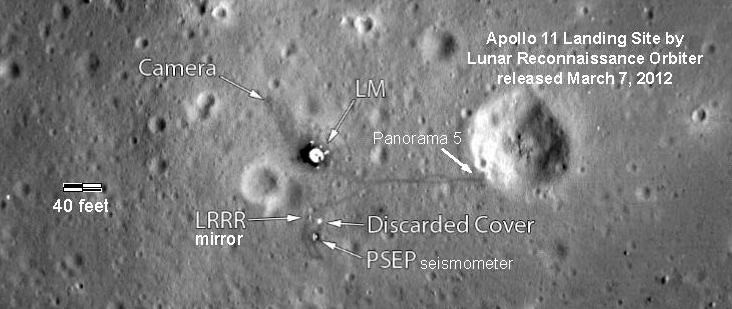
The Sky Is No Limit
Apollo 12 followed in November 1969, landing in Oceanus Procellarum, after suffering a lightning strike during launch. Apollo 13 launched in 1970, but an oxygen tank malfunction in the CSM aborted the mission. Thorough training and mission control’s heroic efforts brought these astronauts home safely.
After investigation and redesign, Apollo 14 landed in the Fra Mauro Highlands in February 1971. Apollo 15 landed at Hadley-Apennine in July and August 1971, with astronauts traveling on the first lunar rover. Apollo 16 landed at Descartes in April 1972. The final mission, Apollo 17, involving the only night launch, landed at Taurus-Littrow in December 1972 and concluded the lunar landing program.
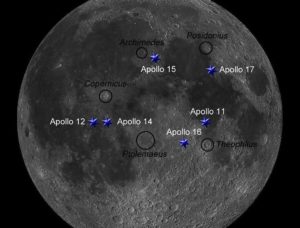
Three additional planned lunar missions were canceled due to funding cuts in 1970. Apollo hardware was subsequently repurposed to support Skylab missions in Earth’s orbit in 1973 and 1974 and a joint mission with Soyuz 19 in 1975.
NASA Administrator James Bridenstine has announced objectives of returning to the moon. This past January, China landed an unmanned probe, Chang’e-4, with its Yutu-2 rover in the Von Kármán crater on the far side of the moon near its south pole, and plans on a manned lunar landing by 2036.
Eventually, though, someone will return to the moon. After all, people did it before. Time will tell whether the next human voice from the lunar surface will be in Mandarin or English.
If space does eventually belong to the dystopian social-credit control freaks, it won’t be from lack of American ingenuity, but because we collectively gaze at our navels while agonizing about bovine flatulence. Maybe we’ll do better. Project Apollo showed us the way.
